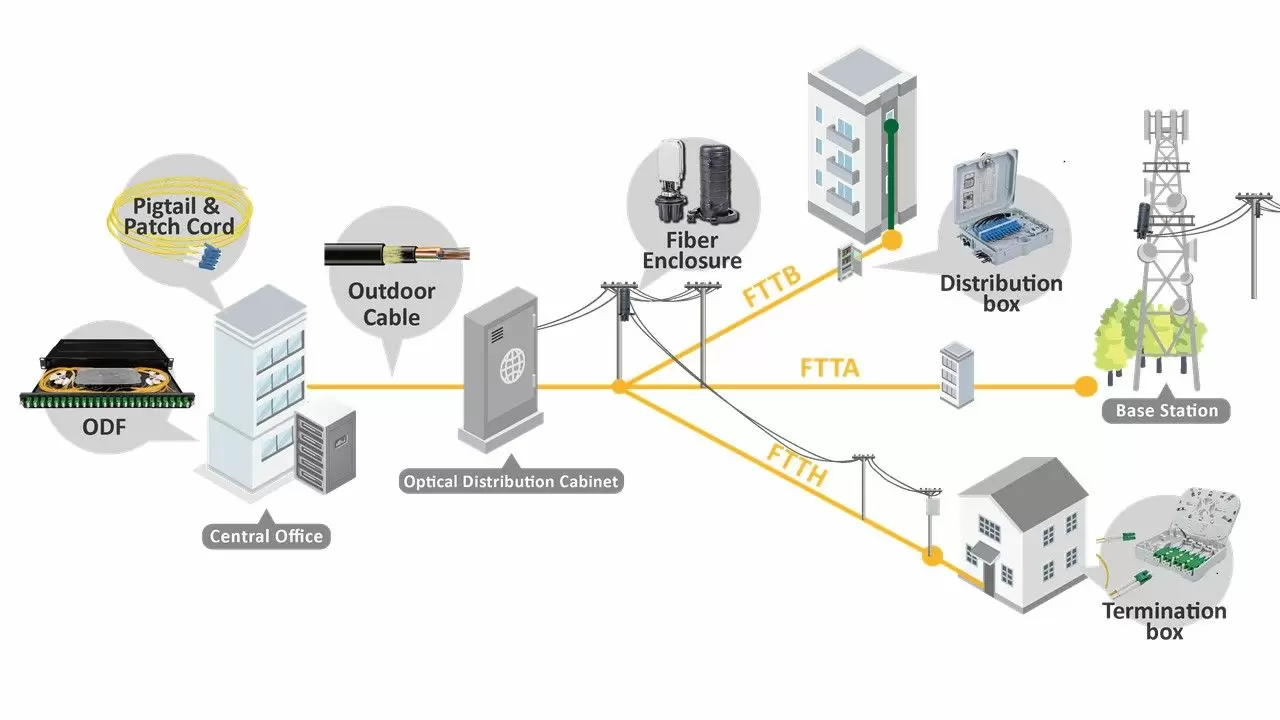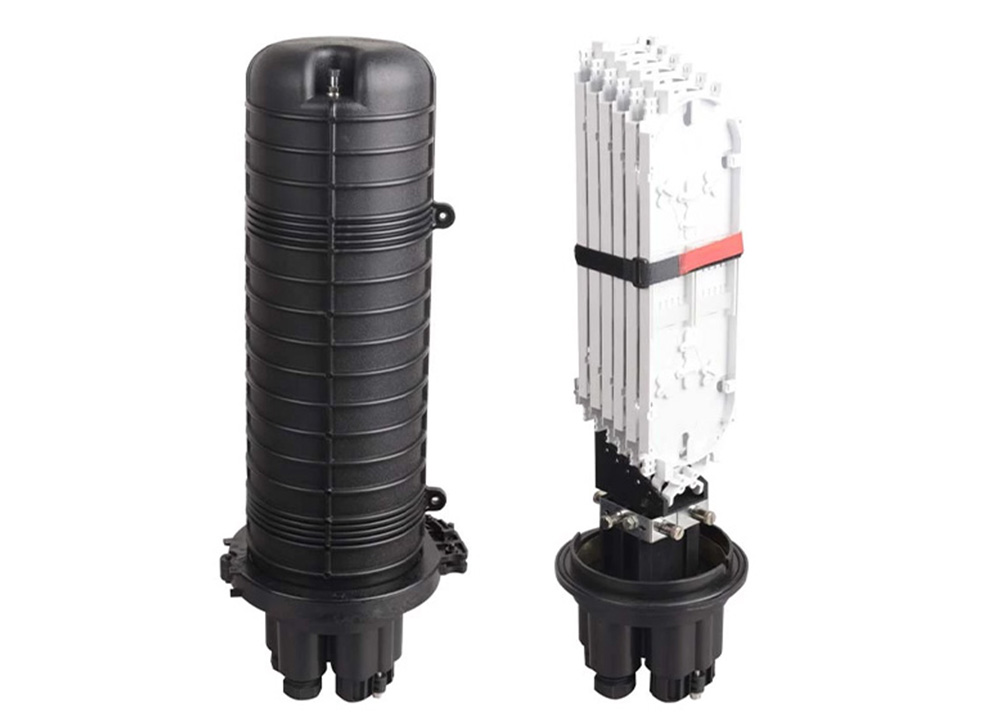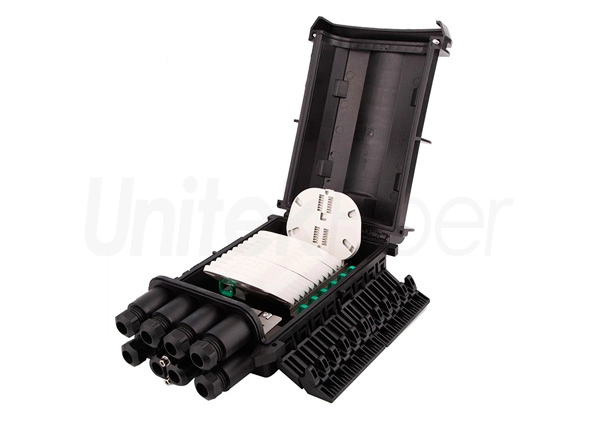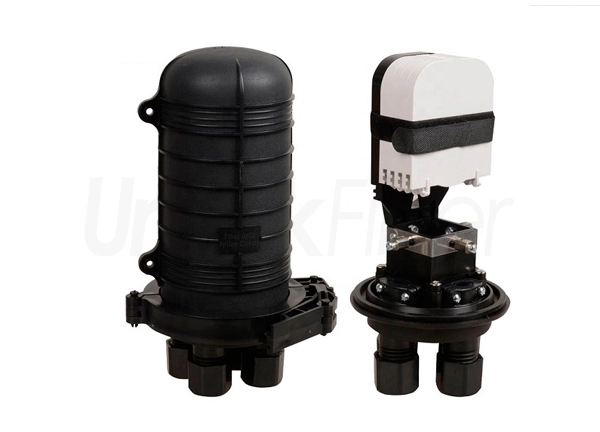
In the rapidly evolving field of telecommunications, Fiber to the x (FTTx) networks are pivotal in ensuring high-speed and reliable internet connectivity. Within this framework, splice closure plays crucial roles. Fiber optic closure is a device used to provide space and protection for fiber optic cables spliced together. The fiber splice box connects and stores optical fibers safely either in the outside plant or indoor buildings. It can provide protection for the fiber joint and the fiber cables since they have excellent mechanical strength and strong out shell, which ensures the joints are not damaged by the hostile environment.

No matter the size, types, and configuration of your network, protecting the connectivity is what counts. According to different applications, optical fiber enclosures are various types of fiber junction box in the market for users to choose from and help them protect their networks.
Vertical fiber optic closure looks like a dome, thus it is also called dome fiber optic splice closure or fiber dome closure. The dome shape makes it easy to be buried in many applications, though it also can be used above-ground as well. The dome splice closure is designed to handle high-capacity fiber splicing needs, accommodating anywhere from 12 to a staggering 1152 cores. The number of inlet/outlet ports of the dome fiber optic closure also varies with application needs. This design is predominantly utilized for expansion and distribution purposes in large network setups, providing a reliable solution for housing numerous fiber cables securely. As a central point of connection, it facilitates organized and safe splicing operations, making it an essential tool in modern telecommunications infrastructure.
_Splice_Closure.jpg)
Inline (Horizontal/Clamshell) Joint Closures are crucial in extending fiber connections seamlessly from a primary point to additional signal points. Inline fiber closure is like a flat or cylindrical case. This type of fiber splice box is the most commonly used one in mounted aerials or buried underground. They are available in a wide range of core capacities, spanning from 24 to 192 cores, making them adaptable to various network scales. These fiber closures foster a streamlined pathway for fiber connections, guaranteeing stable and uninterrupted signal transmissions. It's a choice that brings both versatility and reliability to network setups.
_Joint_Closure.jpg)
Optical networks structure are often complex, especially the optical access segment, which has specific requirements for proper functioning. A reliable fiber optic splice closure is essential for preventing many avoidable problems. For instance, in a network distribution system, a long lasting and durable fiber optical closure can reduce the need for frequent inspections of the access link. When the network reaches the distribution and drop line stages, a splice closure box that enables additional connections is highly beneficial. The following elements are crucial for selecting the right fiber optic splice closures to safeguard the fiber optics in your network.
A quality fiber optic closure must be able to accommodate any fiber optic cable as per the tender document's specifications. Thus, determining cable compatibility is a key step before choosing the appropriate closure type. The design of fiber optic splice closures varies according to the application scenarios. For example, an aerial fiber optic splice closure will have a distinct design from one used underground.
The cable port, also referred to as the cable entrance capacity, indicates how many cables a fiber optic closure can handle. The number of ports available for terminating cables within the closure is what defines its cable entrance capacity. This number depends on aspects such as the network's capacity and the number of cables in use. To reduce the physical size of high capacity fiber optical closures, smaller ports are often used for branch and drop cables.
Prior to selecting a splice closure type, the cable termination system should be designed to offer adequate mechanical strength between the cable and the closure. This ensures consistent performance throughout its lifespan. Given that the materials in optical fibers are prone to thermal expansion and contraction, the materials used in fiber optic splice closures should minimize or counteract the effects of relative motion between cable components.
If cables are not spliced correctly, the splice trays inside the fiber optic splice closure may not be able to hold enough cables. Ribbon or mechanical splices typically have a larger size, which could reduce the capacity of the closure trays. A proper splice configuration can prevent installation issues and enhance performance. Hence, the types of splices should be taken into account when choosing a fiber splice closure.
To ensure the safe deployment and operation of the optical network, proper bonding and grounding of its conductive elements are necessary.
Depending on the network configuration, aerial fiber optic closures may need to be hung on the messenger wire or attached to a pole. In either case, additional hardware is required along with the closures. The hardware and accessories used for attachment and securing should be able to withstand wear and environmental stress.
Maintaining a low bend radius during fiber cable installations is crucial. Ignoring this factor can impact link performance. When making a choice, consider a fiber optic closure that supports effective cable management. Splice closure box that allow for easy installation can prevent excessive stress or damage during handling.
By considering above factors, you'll be well on your way to choosing the right fiber splice closure for your project. Remember, a well chosen fiber optic closure is the key to a reliable and efficient fiber optic network. UnitekFiber as a professional fiber optic splice closure manufacture, we offer all kindly of fiber splice box as you request, such as Horizontal Type Fiber Optic Closure, Inline (Clamshell) Joint Closure and Dome (Vertical) Splice Closure. If you need any support, please kindly contact us at sales@unitekfiber.com.



